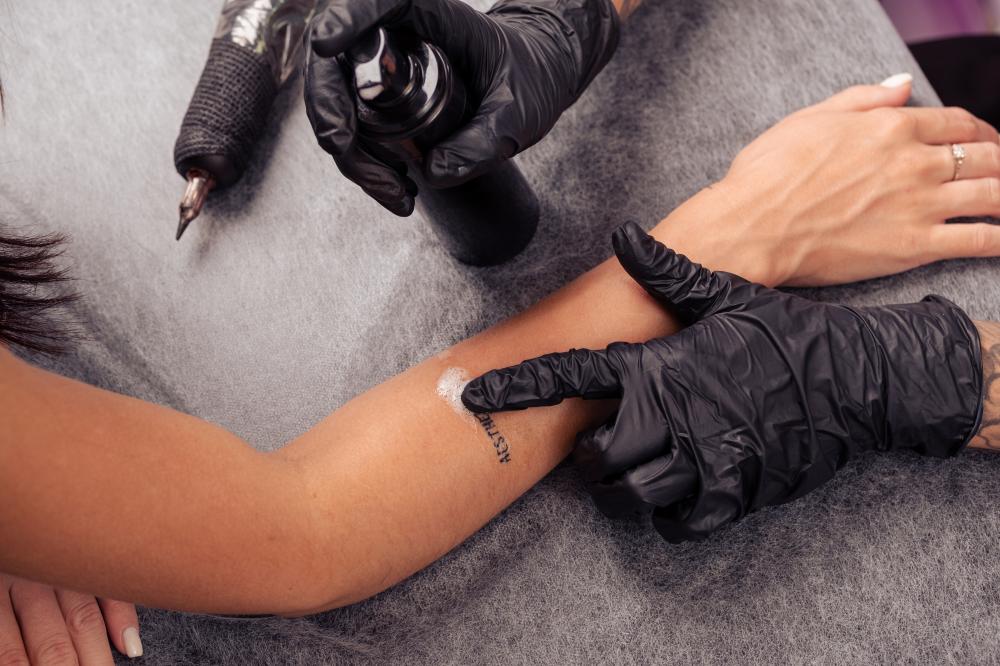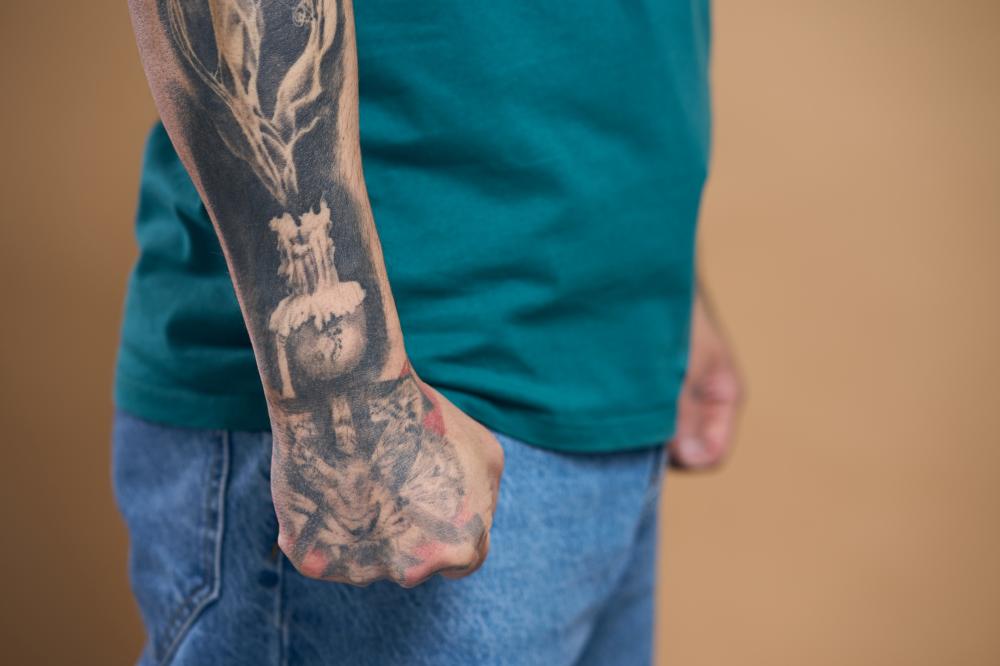
Why Numb Cream Matters for Tattoos
Numbing creams are not only vital for reducing pain but also for increasing the client’s ability to sit through longer sessions. When discomfort is minimized, artists can focus on creating intricate designs without worrying about frequent breaks. This seamless experience often leads to a better final product, boosting satisfaction for both parties involved.
There’s also a psychological component at play. Knowing that they can rely on effective numbing solutions, clients often feel more at ease, making them more willing to undergo multiple sessions. This can be especially valuable when working on large, detailed pieces that require extended periods under the needle.
How Do Numbing Creams Work?
The process begins by applying a generous layer of cream to the desired area. It’s crucial to follow the instructions closely, as over-application can lead to diminished effect or potential skin irritation. The cream should be left on the skin for the time specified by the manufacturer, usually ranging from 30 minutes to an hour, to allow the numbing agents to penetrate sufficiently.
Some patients may question why certain areas of the body are more sensitive than others. This often has to do with the density of nerve endings and skin thickness. For example, areas with thinner skin or proximity to bones tend to be more sensitive, and thus, require more effective numbing solutions.
Choosing the Best Numb Cream for Tattoos
1. Consider the Active Ingredients: Look for creams with a higher concentration of lidocaine, like the LeedFrost 10.56% Lidocaine Cream. These can provide deeper numbing effects, especially for intricate and prolonged sessions.
2. Consult with Professionals: Speak with experienced tattoo artists or medical practitioners. They can provide insights into which products consistently deliver reliable results for tattoos.
3. Conduct a Patch Test: Before diving into a full session, test the cream on a small area of skin. This step ensures there are no adverse reactions, safeguarding both comfort and skin health.
4. Evaluate Product Reviews: Often, the best advice comes from others who have used the product. Customer feedback can provide candid insights into the effectiveness and duration of numbing.
Remember, the right numbing cream is not just a convenience but an essential part of the tattooing toolkit. It can transform a potentially uncomfortable experience into a memorable one.
What Qualifies as a Numb Cream for Tattoos Near Me Emergency?
If any severe symptoms manifest, it’s important to take immediate action:
1. Remove the Cream: Gently wipe off the cream with a clean, damp cloth.
2. Rinse the Skin: Wash the affected area with lukewarm water to ensure all residue is removed.
3. Seek Medical Advice: Contact a healthcare professional to evaluate the symptoms and provide guidance on next steps.
4. Avoid Self-Diagnosing: Refrain from applying other creams or ointments unless advised by a professional.
Taking swift action not only mitigates potential side effects but also helps maintain the integrity of the skin for future tattoo sessions.
Common Questions About Numbing Cream for Tattoos
Can I Use Numbing Cream Without Consulting a Professional? It’s generally advisable to consult with your tattoo artist or a medical professional before using numbing creams. Their expertise can guide you to suitable products tailored to your specific needs.
Will Numbing Cream Affect the Quality of My Tattoo? When used correctly, numbing creams should not interfere with the tattooing process. The key is proper application and timing, ensuring the skin is adequately numb without being overly saturated.
Are There Any Side Effects? While side effects are rare, some individuals might experience slight irritation or allergic reactions. A patch test can help identify potential issues beforehand.
Engaging with these common concerns underscores the importance of being informed. After all, knowledge is a powerful tool in enhancing the tattoo experience.
Are There Alternatives to Numbing Creams?
- Topical Gels: Products like Progelcaine 9.6% Lidocaine Gel can be effective for individuals who react differently to creams.
- Cold Compress: Applying a cold compress before the session can temporarily numb the area, though it may be less effective than numbing creams.
- Mental Techniques: Techniques such as deep breathing or meditation can help manage pain and anxiety during the process.
Each alternative offers its unique benefits. Clients are encouraged to explore these options to determine what best aligns with their comfort levels and tattooing goals.

Can I buy tattoo numbing cream over the counter?
Yes, you can purchase tattoo numbing creams over the counter. Many pharmacies and online retailers offer a variety of numbing products with different active ingredients like lidocaine. However, it’s crucial to choose a cream that is suitable for your skin type and the specific area being tattooed. For instance, Medical Aesthetic Supply provides a range of lidocaine products, such as the LeedFrost 10.56% Lidocaine Cream, which is highly effective for tattoo sessions. Before purchasing, it’s a good idea to consult with a professional, as they can recommend a product that aligns with your specific needs and procedures.
What numbing cream is ok for tattoos?
The right numbing cream for tattoos typically contains lidocaine, as it provides effective temporary relief by blocking nerve signals. Products like LeedFrost, which contain 10.56% lidocaine, are popular among tattoo artists and medical professionals for their potency and depth of numbing effect. It’s important to follow the application instructions carefully to ensure optimal results. If you’re unsure which product is the best fit for your tattoo session, consulting with your tattoo artist or a medical professional can offer guidance tailored to your needs. Remember, the effectiveness and safety of a numbing cream depend on correct usage and individual skin reactions.
Do tattoo shops allow numbing cream?
Most tattoo shops generally allow the use of numbing cream, but it’s always best to check with the specific studio or artist prior to your appointment. Some artists have preferences or recommendations for certain products, so discussing your plan to use a numbing agent can ensure everything goes smoothly. At Medical Aesthetic Supply, we understand that proper numbing can significantly enhance the client experience, allowing artists to focus on their work without interruptions. Communication between the client and tattoo artist about the use of numbing creams can make for a more enjoyable and less painful session.
What can I use instead of numbing cream for tattoos?
If you’re looking for alternatives to numbing creams, there are several options available. Topical gels, such as the Progelcaine 9.6% Lidocaine Gel, offer a different formulation that some may find more effective based on skin type or personal preference. Additionally, applying a cold compress before your session can help numb the area temporarily, although it might not be as effective as creams. Mental techniques like deep breathing or meditation can also be beneficial in managing pain and anxiety. It’s all about finding what works best for you individually. Exploring these alternatives can provide valuable insights into personal pain management strategies.
How should I apply numbing cream for best results?
For the best results with numbing cream, it’s crucial to follow the instructions provided on the product. Typically, you’ll want to apply a thick layer of the cream to the area where you plan to get the tattoo, ensuring it’s evenly distributed. Covering the area with plastic wrap can help the skin absorb the cream more effectively. The application time is generally between 30 minutes to an hour before the tattoo session begins. Following these steps can enhance the cream’s numbing effects, making your tattoo experience far more comfortable.
Are there any side effects to using numbing creams?
While numb creams are generally safe for most users, there can be side effects, especially if not used according to instructions. Some people might experience skin irritation, redness, or an allergic reaction. Conducting a patch test on a small area of skin before full application can help identify any potential issues. If you notice any adverse reactions, discontinue use and consult a healthcare professional. Using products from reputable sources like Medical Aesthetic Supply, which offers high-quality options, can minimize risks and ensure a safer experience.
Is it necessary to consult a professional before using numbing cream?
While it’s not mandatory, consulting a professional before using numbing cream can be very beneficial. Tattoo artists and medical professionals can provide valuable insights into which products are most effective and safe for specific skin types or tattoo areas. They can also offer guidance on proper application techniques to maximize comfort and effectiveness. At Medical Aesthetic Supply, we emphasize the importance of expert advice, as it can result in a better overall experience, reducing risks and enhancing satisfaction for both the artist and client.
Resources
- TattooHealth.org – A comprehensive resource for information on tattoo health and safety.
- American Academy of Dermatology – Offers valuable insights on skincare and dermatological procedures.
- U.S. Food and Drug Administration (FDA) – Provides regulatory information on numbing creams and other medical products.
- MedlinePlus – A trusted source for health information from the National Institutes of Health.

